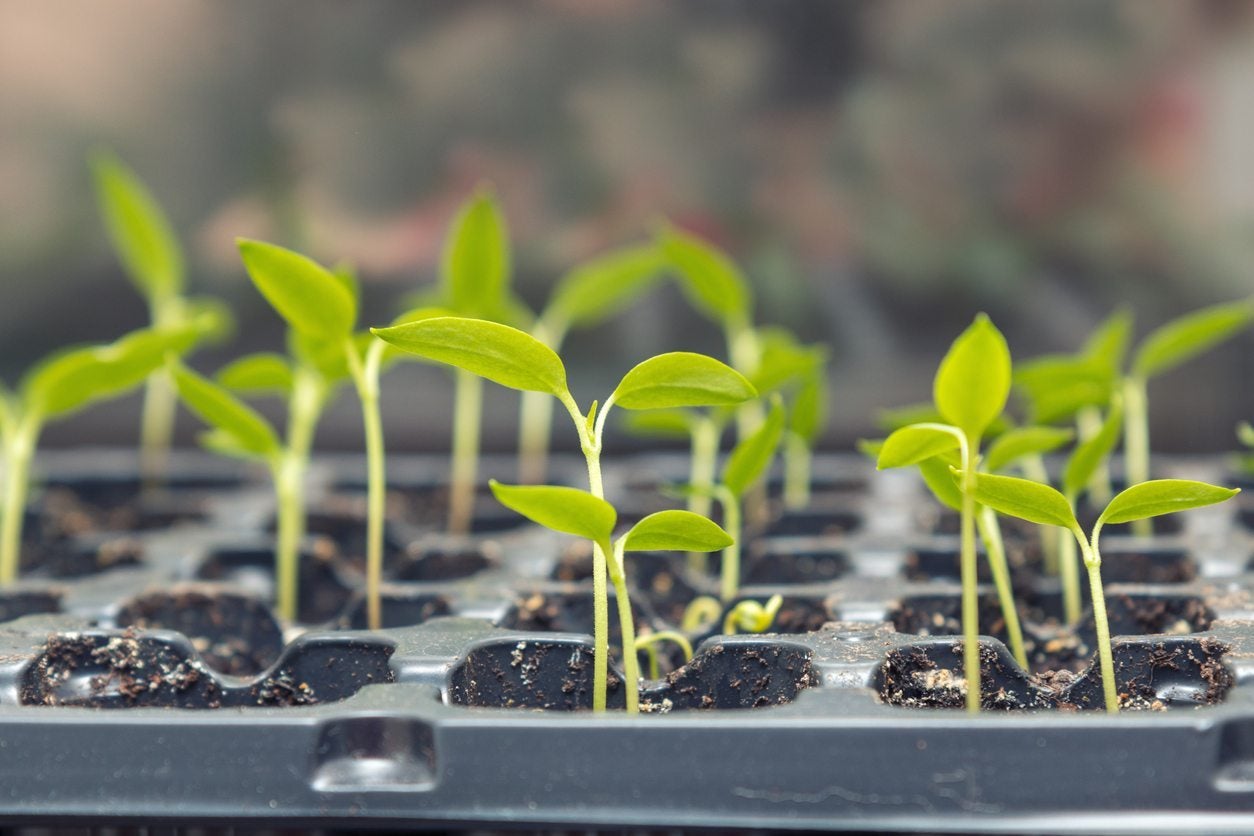Greenhouse Seed Starting – When To Plant Greenhouse Seeds


While many seeds can be sown directly in the garden in fall or spring and actually grow best from natural weather fluctuations, other seeds are much more finicky and require steady temperatures and a controlled environment to germinate. By starting seeds in a greenhouse, gardeners can provide a stable atmosphere for seeds to germinate and seedlings to grow. Continue reading to learn how to sow seeds in a greenhouse.
When to Plant Greenhouse Seeds
Greenhouses allow you to control the temperature and humidity required for seed propagation and young seedlings to grow. Due to this controlled environment, you can actually start seeds in greenhouses anytime.
However, if you are starting plants, which you plan to transplant into gardens outdoors in the spring, then you should start the seeds in greenhouses six to eight weeks before the last expected frost date for your location. For best success, most seeds should be germinated in temperatures around 70 to 80 degrees F. (21-27 C.), with night temperatures that do not dip lower than 50 to 55 degrees F. (10-13 C.).
The temperature in your greenhouse should be carefully monitored. Greenhouses are generally warm during the day, when the sun is shining, but can get much cooler at night.
Seedling heat mats can help provide seeds with consistently warm soil temperatures. Greenhouses that are equipped with fans or opening windows can vent greenhouses that have gotten too hot.
Greenhouse Seed Starting
Seeds are usually started in greenhouses in open flat seed trays or individual plug trays. Seeds are prepped according to their specific needs; for example, they may be soaked overnight, scarified or stratified, then planted in trays the greenhouse. In open flat trays, seeds are usually planted in nicely spaced rows for ease of thinning, watering, fertilizing, and treating seedling diseases, such as damping off.
Then, when these seedlings produce their first set of true leaves, they are transplanted into individual pots or cells. In single cell trays, only one or two seeds is planted per cell. Many experts feel that planting in plug trays is better than open trays because the plug cells hold and retain more moisture and warmth for the developing seed.
Gardening tips, videos, info and more delivered right to your inbox!
Sign up for the Gardening Know How newsletter today and receive a free copy of our e-book "How to Grow Delicious Tomatoes".
Seedlings can also stay in plug trays longer without their roots becoming intertwined with their neighbors. Seedlings in plugs can simply be popped out and transplanted right into the garden or container arrangements. When starting seeds in a greenhouse, you don’t need to spend a fortune on special seed starting mixes. You can mix your own general purpose potting mix by adding 1 equal part peat moss, 1 part perlite, and 1 part organic material (such as compost).
It is, however, very import that any potting medium you use be sterilized between uses to kill off pathogens that can lead to the seedling disease known as damping off. Also, if temperatures are too cool in the greenhouse, light is not intense enough, or if seedlings are overwatered, they may develop leggy, weak stems.
-
 Looking For Plants To Give You The Soft And Fuzzies? Try These 5 Fuzzy Leaf Plant Options
Looking For Plants To Give You The Soft And Fuzzies? Try These 5 Fuzzy Leaf Plant OptionsLovers of texture, drama, silver foliage and tactile plants will adore these special sensory garden additions. These fuzzy leaf plant options will leave you all aglow
By Susan Albert
-
 Get Ready For A Summer Of Hummers! Grow These Full Sun Hummingbird Plants and Flowers
Get Ready For A Summer Of Hummers! Grow These Full Sun Hummingbird Plants and FlowersIf you’re lucky enough to enjoy a sunny backyard, make sure you are maxing out on your pollinator opportunities and grow these full sun hummingbird plants and flowers
By Tonya Barnett